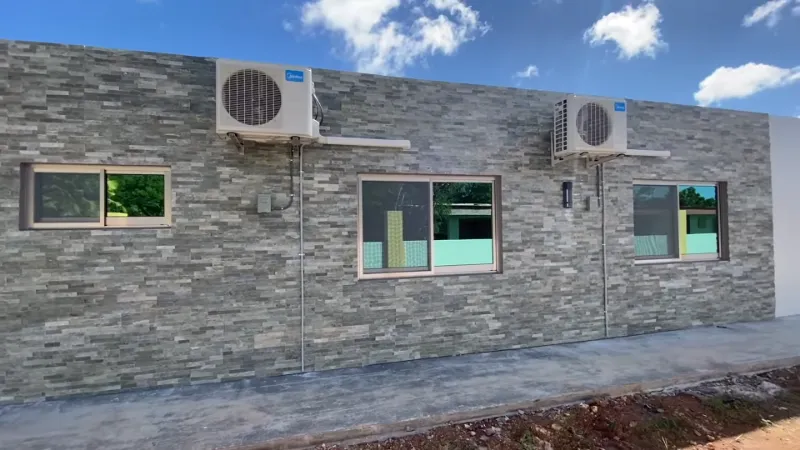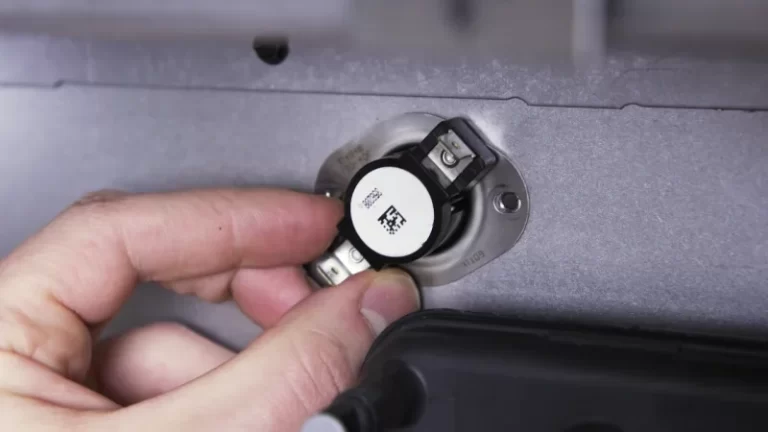Can You Run Two Rv Air Conditioners On 30 Amp?

RV air conditioners are a great way to keep your RV cool and comfortable on a hot day. But many campers wonder if they can run two RV air conditioners on a 30 amp system. The answer is yes, but there are some important things to consider before attempting to use two RV air conditioners on a 30 amp system.
This article will provide an overview of the various aspects to consider when running two RV air conditioners on a 30 amp system.
You'll Learn About
Can You Run Two Rv Air Conditioners on 30 Amps?
Yes, it is possible to run two RV air conditioners on a 30 amp power source, although it is not recommended. This is because the combined power draw of two RV air conditioners can exceed 30 amps, which can cause circuit breakers to trip and lead to potential damage to your RV, as well as an overall decrease in performance.
What is the Combined Power Draw of Two Rv Air Conditioners
The combined power draw of two RV air conditioners can range from approximately 5,000 watts to 6,400 watts (or 20-25 amps per air conditioner). This is a significant amount of power for a 30 amp power source, and can easily exceed the maximum amount of power available from a 30 amp outlet.
Alternatives to Running Two RV Air Conditioners on a 30 Amp Power Source
There are a few alternatives to running two RV air conditioners on a 30 amp power source. For example, you could install a 50 amp outlet and use a 50 amp extension cord to connect your RV to the power source.
This will provide enough power for two RV air conditioners without tripping the circuit breaker.
You could also install a second 30 amp outlet and use a splitter to connect the two RV air conditioners. This will allow each air conditioner to draw its own separate power source, and will help avoid any potential issues with tripping the circuit breaker.
Risks to Running Two RV Air Conditioners on a 30 Amp Power Source
Yes, there are risks associated with running two RV air conditioners on a 30 amp power source. As mentioned previously, the combined power draw of two RV air conditioners can exceed 30 amps, which can cause circuit breakers to trip and lead to potential damage of your RV, as well as an overall decrease in performance.
Additionally, the increased power draw can cause the air conditioners to struggle to keep up with the cooling demand, leading to an overall decrease in performance.
It is possible to run two RV air conditioners on a 30 amp power source, although it is not recommended. The combined power draw of two RV air conditioners can easily exceed 30 amps, which can cause circuit breakers to trip and lead to potential damage of your RV, as well as an overall decrease in performance.
There are a few alternatives to running two RV air conditioners on a 30 amp power source, such as installing a 50 amp outlet or a second 30 amp outlet and using a splitter. It is important to understand the risks associated with running two RV air conditioners on a 30 amp power source before attempting to do so.
How Many Watts Can a 30 Amp Rv Handle?
A 30 amp RV is a recreational vehicle with a 30 amp power supply. The 30 amp power supply is connected to a 120 volt AC electrical system. The maximum wattage capacity of the RV is determined by multiplying the amps with the voltage.
In this case, the equation is 30 amps X 120 volts = 3,600 watts. This means the RV can handle up to 3,600 watts of power. This is enough to power appliances such as microwaves, TVs, and air conditioners.
The total wattage used should not exceed 3,600 watts in order to prevent overload. To ensure proper power distribution, it is recommended to use heavy duty extension cords. To prevent any potential hazards, any appliance with a wattage higher than 3,600 watts should not be used in the RV.
Knowing the maximum wattage capacity of the RV is important for safe and effective use of electricity.
How Much Can a 30 Amp Rv Handle?
A 30 amp RV connection can provide up to 3600 watts of power. This is enough to power most RV appliances and electronics. However, it is important to be mindful of the total wattage used and not exceed the capacity.
If the wattage is exceeded, the breaker in the RV or on the campground pedestal will trip. Appliances like the roof air conditioner usually have their own, larger circuit breakers. To ensure safety, it is best to use one appliance at a time on this connection.
It is also important to make sure that the wattage rating of each appliance does not exceed the 30 amp limit. Generators can also be used to help power an RV if additional wattage is needed. Plugging too many appliances into a 30 amp connection can be dangerous and lead to a fire.
Therefore, it is important to be aware of the wattage needs and take the necessary safety precautions when using a 30 amp RV connection.
Can You Run 2 Ac Currents on Single Phase?
Yes, it is possible to run two AC currents on a single phase. This can be done by using a suitable power divider. A power divider divides the current into two separate circuits. This allows two separate AC currents to operate on a single phase.
The power divider should be rated for the amount of current required. It is important to ensure that the power divider is compatible with the type of AC current being used. It is also important to ensure that the power divider is suitable for the amount of power and frequency that the AC current will draw.
It is important to check the electrical load capacity of the single phase line to ensure that it is not overloaded. Overloading the single phase line can cause safety hazards and damage to the equipment.
It is advisable to consult a qualified electrician for advice on how to safely run two AC currents on a single phase.
What Happens if You Plug a 30 Amp Rv Into a 50 Amp?
Plugging a 30 amp RV into a 50 amp source can cause major damage to the RV’s electrical system. A 50 amp service has more power capacity than a 30 amp service. If the RV’s electrical system is not designed to handle the higher power, it could cause a power overload.
This could result in wire damage, sparking, and even fire. To avoid this, you should always use an adapter to reduce the power of the 50 amp connection to the level suitable for the RV. You should also make sure that the RV’s main breaker and the pedestal breaker are both rated for 30 amps.
This will ensure that if there is an overload, the main breaker will pop before the pedestal breaker does. If the main breaker fails, the pedestal breaker will provide additional protection to your wires.
It is also important to check the RV’s electrical system regularly to ensure it is working properly. Taking these precautions will help ensure that your RV is safe and running smoothly.
Can I Run 2 Ac Units on One Circuit?
Running two AC units on the same circuit is not recommended. Doing so can cause the circuit breaker to trip. This is due to the high start-up current when one unit is running and the high current when they are both running.
Other loads on the same circuit may also be affected. It is best to use a dedicated circuit for each AC unit. This will ensure that each unit has enough power for operation. It will also help to prevent overloading of the circuit.
Dedicated circuits are also safer as they are not affected by other loads. If you must use one circuit for both units, make sure it is a heavy duty circuit with sufficient capacity. And use a circuit breaker that is rated for the combined current of both units.
Should You Run Both Ac Units in Rv?
RVs larger than 32 feet often require two air conditioners for optimal cooling. Size is a major factor in determining the need for two AC units. The airflow of an RV is also important for cooling efficiency.
Running both AC units at the same time can provide better coverage and comfort. Multiple AC units can cool the entire RV more quickly and evenly. Single AC units may not be able to adequately cool the entire RV space.
Two AC units can provide a more efficient and comfortable climate. Running both AC units can help to reduce energy costs. Dual AC units can also help to reduce humidity levels in the RV. Having two AC units can be a great convenience for RVers.
Can You Run Both Ac in an Rv?
RVs come with one air conditioner as standard, but many RV owners opt to install a second AC unit to keep their RV cooler in the summer months. While it is possible to run both AC units in an RV, there are several factors to consider before doing so.
Power Consumption
The most important factor to consider when running both AC units in an RV is the power consumption. The second AC unit requires more energy than the first one, which can put a significant strain on the RV’s power supply.
If you are using shore power, you may need to use a generator to power both air conditioners simultaneously.
Generator Considerations
If you decide to use a generator to power both AC units in your RV, you will need to make sure that the generator is powerful enough to handle the load. You will also need to make sure that the generator is properly vented, as additional heat from the generator can make the RV even hotter.
Additional Cooling Options
If the power consumption of both AC units is too much for your RV, you may want to consider other cooling options. These can include window-mounted air conditioners, portable air conditioners, and ceiling fans.
These options can help to keep your RV cool without putting too much strain on its power supply.
Maintenance
Regardless of how you choose to keep your RV cool, it is important to regularly maintain all of the components of your cooling system. This includes making sure that the AC units are clean and free of debris, as well as checking the power supply and making sure that all of the wiring is secure.
Regular maintenance can help to ensure that your cooling system runs efficiently and keeps your RV comfortable throughout the summer months. Otherwise, you’ll fetch problems as well as refrigerator temperature issues.
To Recap
In conclusion, it is possible to run two RV air conditioners on a 30 amp system, but there are a few important things to consider before attempting it. Make sure to check the total power draw, the power supply, and the wiring to ensure that everything is safe and up to code.
With this information, you can make an informed decision about whether or not running two RV air conditioners on a 30 amp system is right for you.



